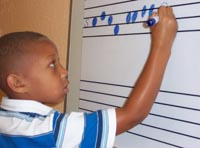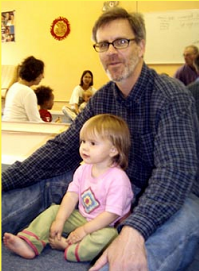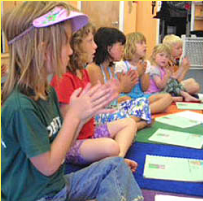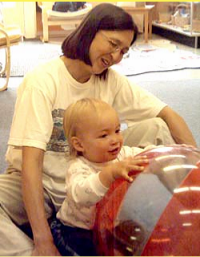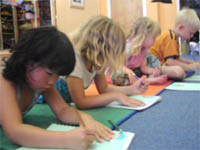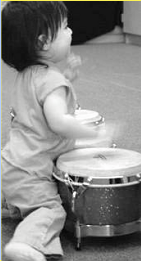


Jingle Jamboree music classes incorporate the Kodály philosophy of music which originated with the Hungarian composer and educator, Zoltan Kodály (1882-1967). We believe that everyone is born with musical aptitude which should be developed as early as possible. The aim is to instill a love of music in each child.
Singing is the foundation of children's musical development. The singing voice is the musical instrument of children that accompanies them wherever they go. Singing in-tune is a skill that all children can learn.
The Kodály approach is a dynamic, exciting way of teaching and learning based on the developmental readiness of the child. The process involves a sequential layering of skills and concepts designed to build success for every child.
Music education also develops the child's intellectual and social faculties. When a child plays music games based on the Kodály method she learns to express her feelings with confidence using mime and gesture. Learning the words, melody, and movements of a song help develop the child's memory. Understanding beat and rhythm develops through the use of movement activities. The development of singing in-tune comes by hearing the song at seven different times sung within the child's range, joining in the singing, and by isolating the intervals in songs. Furthermore, the duality of learning music and developing intellectually promotes the simultaneous use of the right and left sides of the child's brain.
As the children grow, Jingle Jamboree music classes change to meet the developmental levels of the children. The classes incorporate the use of puppets, visual aids, interactive materials and song games. The focus of each class will be to develop the singing voice and each age-appropriate music concept.
What happens when my child takes music classes before 6 years of age?
"The corpus callosum, the organ that carries communication between the two hemispheres of the brain (right brain/left brain) has been shown to be 10 to 15 percent larger in musicians who began music study before the age of six than in nonmusicians or even musicians who started music later in childhood. . . The planum temporale, the area of the brain that processes sound has been found to be larger in the left hemisphere of musicians than in nonmusicians." - G. Schlaug, L. Jancke, Y. Huang and H. Steinmetz, "In Vivo Evidence of Structural Brain Asymmetry in Musicians," Science, 267 (January-March 1995): 699-701
Discussions of this topic and further evidence are found in "Raising Musical Kids A Guide for Parents: by Robert A Cutietta. You can also google the title of the article above for more information ("In Vivo Evidence . . . ") Information provided by Jingle Jamboree Music 2010
The Latest Research on Music Education:
In vivo evidence of structural brain asymmetry in musicians
http://www.sciencemag.org/content/267/5198/699.short
This research includes many studies including:
The power of music: Its impact on the intellectual, social and personal development of children and young people
For more information on the Kodály Philosophy please visit the following websites:
Kodály Vision & American Folk Songs
http://kodaly.hnu.edu
Latest Research to support Kodály Music Education for children
http://www.psychologicalscience.org/
Director: Jeffrey L. Luna-Sparks, M.M.Ed./Kodály
(510) 334-8851




